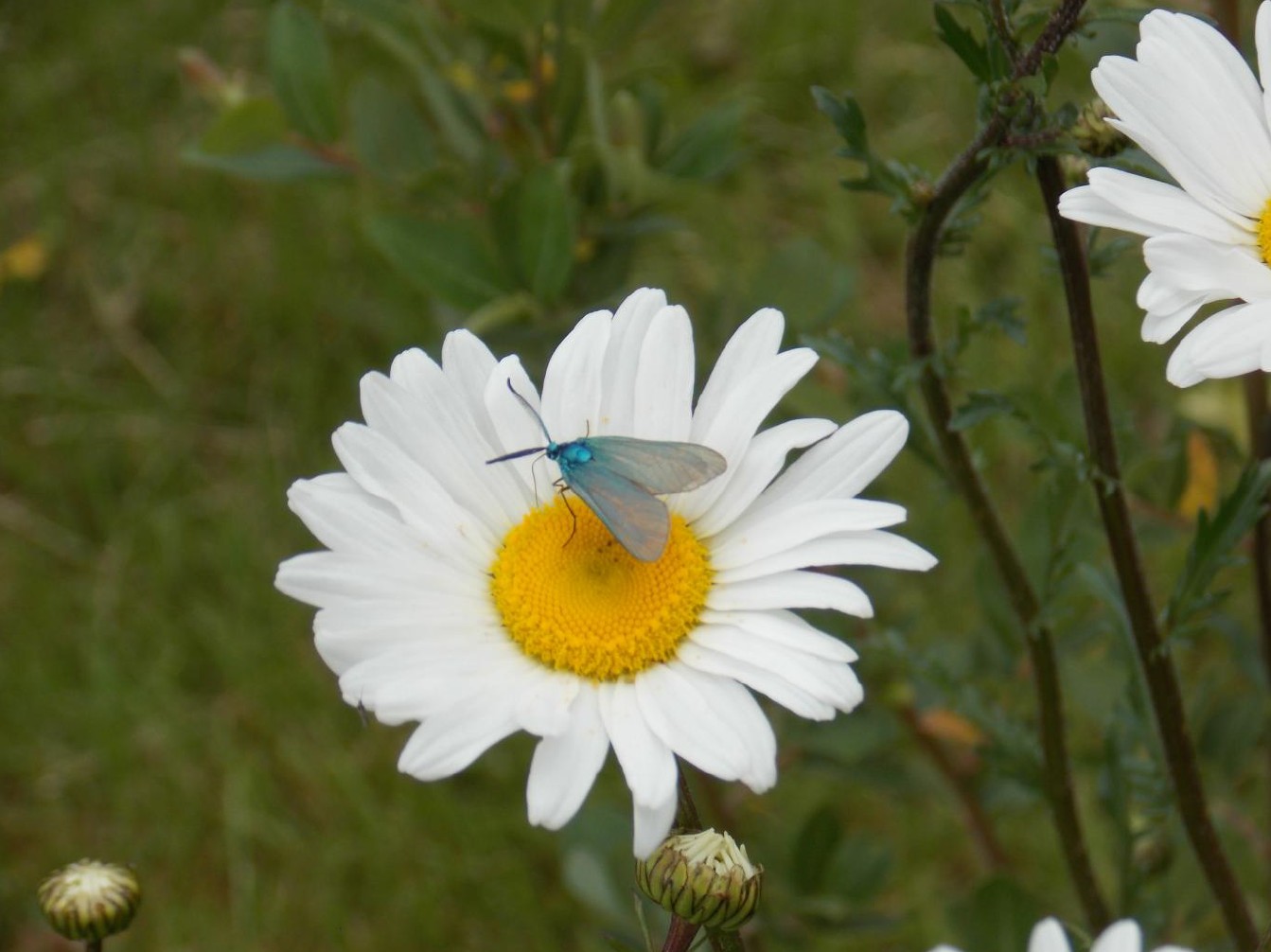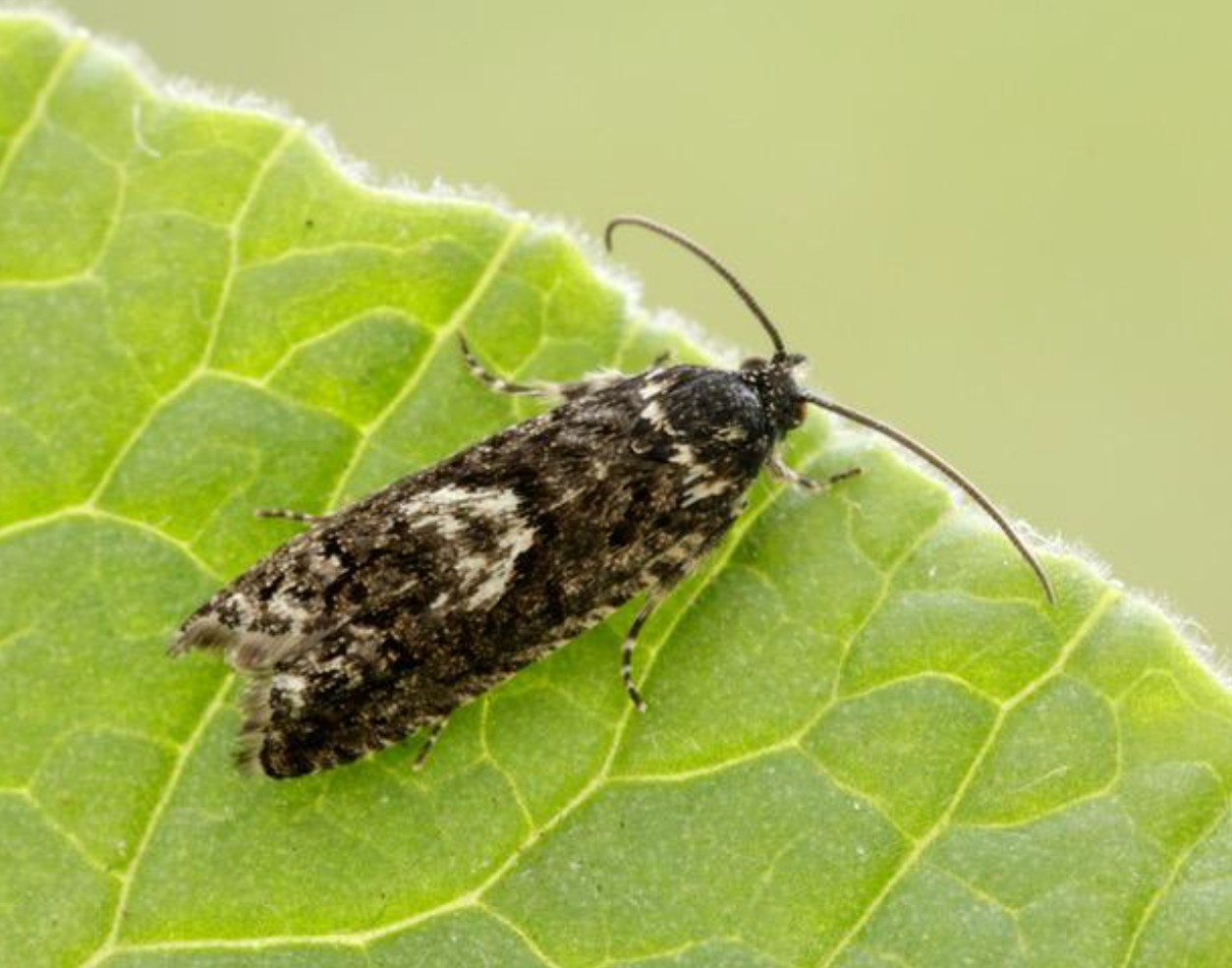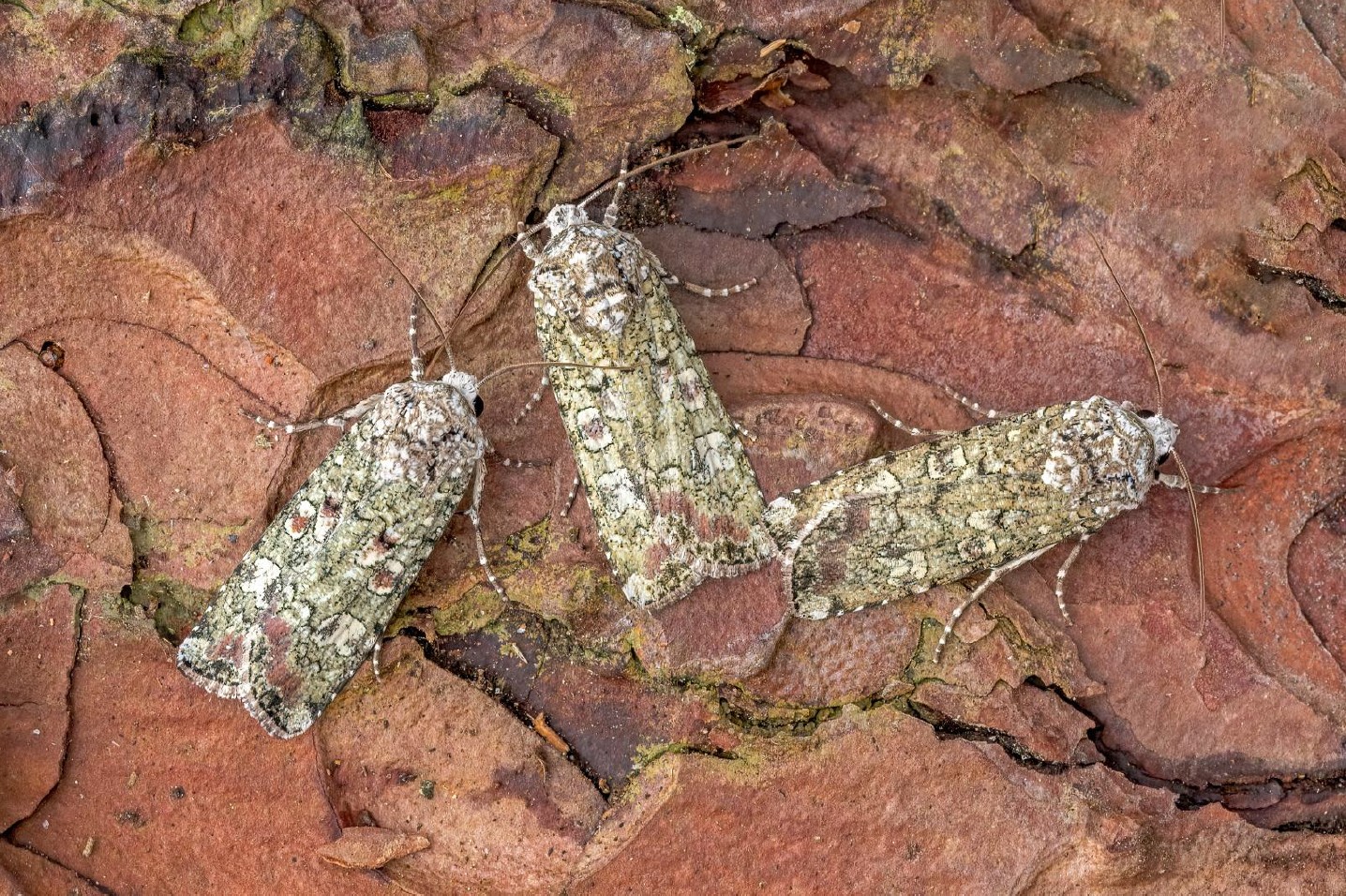This iridescent blue-green moth is a day flier and spends a lot of time feeding on flowers. It is an insect of tall vegetation particularly where there are plenty of open flowers which can supply nectar. It actually lays its eggs on sorrel or sheep’s sorrel, both of which are common plants in long grassland. The hatching caterpillar mines the leaves initially and then eats the leaves in the normal way. The caterpillar is short and plump and normally pale green although it can be various other shades including pinky white. There is a broad dorsal stripe, a black head and patches of light grey hairs over the body. It can have many instars but hibernates over winter before pupating in a whitish cocoon near the ground the following May.
The moth emerges from the end of May and is on the wing through June and July with this week seeing the peak of the numbers. This was a widespread species in England and Wales but has had a considerable decline as a result of agricultural developments and a loss of its habitats. In Scotland it is found on the west coast around Oban including on the islands of Lismore, Mull and Jura and in D&G. Here it is a moth of Kirkcudbrightshire between Dumfries and Kirkcudbright mainly along the coast but including inland populations such as Glen Trool (where this photo was taken on the 13th June) and Mabie Forest where the habitat is being specifically managed for this species. We have over 100 D&G records dating back to 1860 but it remains an uncommon moth which despite being very distinctive and day flying is probably being overlooked.
This is a member of the family Zygaenidae which includes the more familiar Burnet moths. There are two other forester moths in the UK – the Scarce Forster which lives in the very south of England and feeds on knapweed and the Cistus Forester which is scattered over England and Wales as far north as Cumbria feeding on Rock Rose. The latter is obviously a specialist feeder with its food-plant limited to lime-rich areas. It is not impossible for it to reach D&G and the rock rose an area along the coast although the adult moth is very similar in overall looks although smaller and with slightly different antennae and could easily be overlooked.
Clearly we have a special responsibility for the Forester and it would be great if we could have a better idea of where it is currently found.




